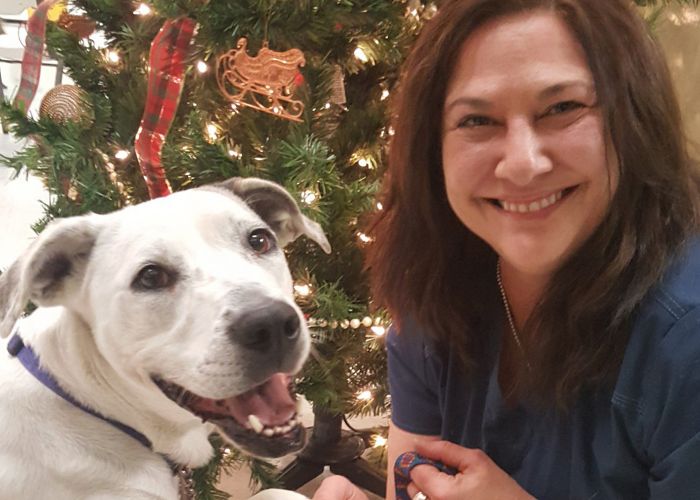Ask the experts: Dr. Lucy Fuller, Tom Van Winkle and Darlene Duggan
Sheltering experts discuss the Association of Shelter Veterinarians’ guidelines for animal shelters

In early January, Darlene Duggan and seven of her co-workers had just completed a day of training at the ASPCA Behavioral Rehabilitation Center outside Asheville, North Carolina, when their phones began simultaneously pinging alerts.
It wasn’t the latest on Prince Harry’s memoir or new Taylor Swift tour dates. For Duggan and her colleagues, the news was much bigger: The Association of Shelter Veterinarians had just announced the release of the second edition of its Guidelines for Standards of Care in Animal Shelters.

“We’d been waiting for the updated version to come out with bated breath,” says Duggan, chief operations officer at the Anti-Cruelty Society, an open-admission shelter in Chicago. “I have a flashbulb memory of us walking through the parking lot, furiously trying to look and see what was new.”
They weren’t the only ones eager to view the changes. In May, 850 people attended a four-hour webinar on the updated guidelines. “The engagement with the second edition is phenomenal,” says ASV executive director Tom Van Winkle. “It shows that [the guidelines] have gotten out there and are becoming embedded into people’s daily lives.”
The genesis of the guidelines came 15 years ago when the ASV recruited shelter veterinarians from around the country to develop a first-of-its-kind resource: a set of common standards, covering everything from record-keeping to population management, that would enable shelters and rescues to evaluate their operations and provide the best possible care for their animals. The first edition was published in 2010 and has since been translated into several languages and even incorporated into state regulatory language, says Van Winkle.
Dr. Lucy Fuller, chief veterinary officer at the Charleston Animal Society in South Carolina and a co-author of the second edition, was just starting her career in shelter medicine when the original guidelines were released. “They introduced us to the idea that a shelter should be comparing itself to a standard,” she says, “the idea that shelters are not just islands” and should strive to meet humane care standards, not just legal requirements.
It’s a message the ASV continues to promote with the second edition, which incorporates over a decade’s worth of advances in shelter medicine and research on best practices. In this edited interview, Duggan, Van Winkle and Fuller discuss the evolution of the guidelines and their continuing impact on the sheltering field.
Can you talk about the value of having a set of common sheltering standards written by shelter veterinarians?

Van Winkle: When the first edition came out, I was working as executive director of the Animal Care League in Oak Park, Illinois. There was always a fair amount of internal pushback among staff on certain changes because somebody always knew better than somebody else how things should be done. It was nice to have an authority to take it out of the realm of two people squabbling and be able to say, “This is what we’re going to use as our guidance.”
Also, to the outside world, having a group of DVMs behind a set of recommendations gives them a lot more credence. I’ve had several people approach me at different conferences and say, “We’re going to use your guidelines to present to our county board to show them what we need.”
Duggan: Having these guidelines has really helped our staff understand the why of what we’re doing. Our population management works off a model we call “best care.” From an operations standpoint, we need to define what best care actually is, and that’s where the guidelines tremendously help us, to support and ensure that programs, services and protocols we use are in compliance, and to identify what else we can do to go above and beyond.
What were the challenges of drafting standards that are relevant to all types of shelters as well as rescues and sanctuaries?
Van Winkle: We tried to create the guidelines so that they were general; they’re not meant to be an operations manual. The guiding principle is meeting animals’ physical and emotional needs, regardless of the mission of the organization or the challenges involved in meeting those needs. These needs don’t change, but how they’re met can differ.

Fuller: For the second edition, we recruited 19 shelter veterinarians as authors and tried to make sure we had folks from all around the country with different types of experience, from municipal and nonprofit agencies and with different budgets. A lot of us suffer from the same concerns that many other shelters are dealing with. So just because I’m on the guidelines committee doesn’t mean I’m swimming in money to buy new cat cages.
Sometimes you can come up with creative solutions to address problems. So if you can’t improve your cat housing, well, can you improve the number of cats coming in? It doesn’t have to be super expensive. If you can identify a project or two you need to have done using the guidelines as justification, you might ask for grants or get some ideas from other shelters because you’re not the only one facing that challenge.
What are the most significant changes in the second edition?
Van Winkle: There are two completely new chapters on forensics and disaster response, and the sections on transport, surgery and behavior were significantly expanded.
Fuller: The original guidelines used the framework of the Five Freedoms, which are mainly focused on the avoidance of negative states, such as freedom from hunger or thirst and freedom from fear or distress. In the new edition, we shifted to talk about the Five Domains, which provide a more holistic view and incorporate positive states. The idea is that we’re going beyond just providing for animals’ basic needs, which is still important, to actively improving their lives as much as possible.

You also provide a checklist with the second edition; what inspired that?
Fuller: What we discovered after the first document came out was it’s great, but who has time to read it cover to cover? For the new edition, we included a checklist with 553 key actionable items that allows you to walk through your shelter and literally complete a checklist and to know where your shelter is. It makes it more digestible.
To help shelters prioritize, we also labeled each actionable item as unacceptable, must, should or ideal. “Unacceptable” is stop the presses; you can’t be doing this. “Must” items are ones your shelter should make a priority and are necessary to ensure humane care. The “shoulds” are the items we strongly recommend. “Ideal” encompasses the things your shelter should implement as resources allow.
Was it difficult to draft guidelines everyone agreed on?
Fuller: We had to come to consensus on all the statements, and in some cases, we changed language to have statements everyone could agree on. I’m proud of the fact that we were able to do that. I think it was important for the document’s integrity.
Also, from the start, the guidelines have been rooted in scientific research. There is a fair amount of expert opinion in there as well, which is also important, but we always looked to research to back up the statements that we made. It was a long process and a labor of love for all of us.







